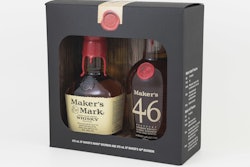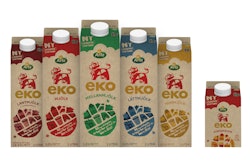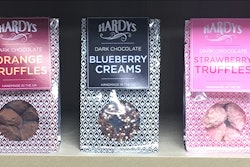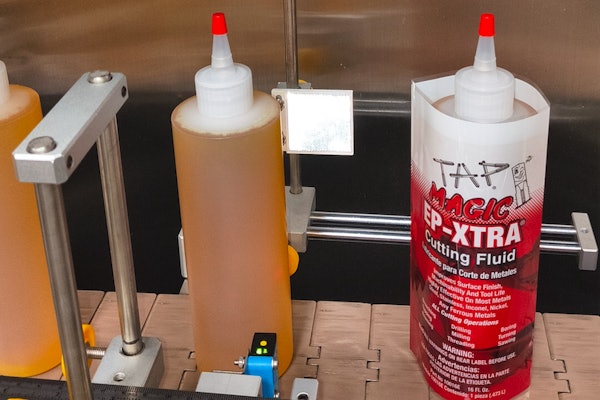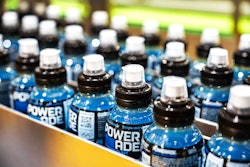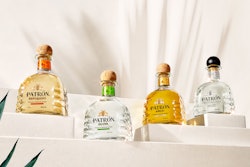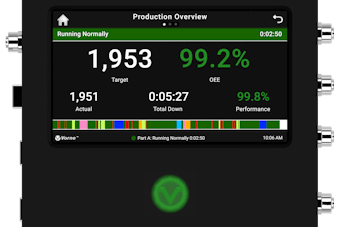Technology advancements and impending regulation changes are driving the carton board packaging market in new directions, as demand for the packaging type continues to grow.
According to research conducted by Smithers Pira, “The Future of Folding Cartons to 2022,” the value of the global carton board packing market passed the $100 billion mark in 2016 consuming more than 40.3 million tonnes (44 million tons) of material in folding carton and micro/miniflute packaging applications. Several market influences will combine to push worldwide demand for carton board in packaging to increase at 4% annually until 2022, creating a global market value of $124.1 billion in that year.
The global study states that the Asia-Pacific region accounted for nearly 58% of the total volume in 2016, with Europe, the Middle East, and Africa (EMEA) making up a 24% and the balance (18%) coming from the Americas. China alone consumed 36% of the total volume in 2016. The region will continue to dominate and is expected to command a 63% market share by 2022, with China taking more than 40% of the forecast volume of over 50 million tonnes (55 million tons).
As the market develops over the next five years, Smithers Pira’s research reveals four major technology advancements that are supplementing market growth:
- New and innovative materials enabling environmentally friendly packaging
- Advances in printing technologies improving product shelf appeal and print turnaround
- Anti-counterfeit and security measures—including RFID technology—creating new value-adding opportunities
- The development of coated folding carton grades to meet ongoing concerns over food safety
Innovative materials
In addition to incremental gains in lightweight board grades and introducing recycled paper content, environmental pressures from brands and consumers are pushing the market toward eco-friendly materials.
This has led to non-wood pulp unconventional materials such as edamame beans, waste hazelnuts, and cocoa beans being utilized. Edamame is not a common vegetable for the average Western palate, however is a popular Asian soy bean often used as an appetizer. The edible part of the edamame beans come out of their pod, and the remains are typically thrown away. But rather than disposing of the waste, the pods are recycled to make soy packaging that the edamame snack is eventually served in.
Italian confectioner Ferrero has collaborated with Stora Enso to produce a material known as EcoPaper using the hazelnut shells and cocoa bean peel left over from the production of its confectionery. This waste material has been converted using a dry milling process and then added to the middle layer of a triplex folding box board.
Emerging printing techniques
The need for brand owners to increase product shelf appeal has led to ongoing changes and improvements in printing technologies and techniques among converters. More colors and a wider range of finishes are required to satisfy brand owners’ demands, encouraging the shift in favor of plain folding cartons, as these boards offer enhanced printing and finishing.
Digital printing (ink-jet and toner) is gaining in popularity, as improvements in the economics and productivity from a new generation of printers designed specifically for packaging work is increasing its competitiveness against analog processes. Packaging buyers are calling for shorter run lengths and quicker response times, this favors digital printers with their increased automation, minimal waste, and short makeready times.
These demands contributed to a proliferation of short-run innovations launched at Drupa 2016, including digital, analog, and hybrid solutions that marry analog with digital. These included products like the Landa S10 Nanographic Printing Press, featuring the Landa NanoInk, Nanography process. The NanoInk images efficiently absorb light and are laminated onto the substrate without penetrating it, enabling a thickness of about 500 nm. The process consumes less material and is more cost-effective, as well as being water-based and environmentally sensitive.
Brand owners’ demands for exceptional graphics are generating interest in specialty inks and coatings, including satin, matte, and gloss printing, as well as sensory coatings. Others are cashing in on the “interactive” trend, providing color shifting, reticulating, and aromatic coatings. Uncoated carton board is also increasing in popularity among users who favor a more natural look and feel.
Anti-counterfeiting
According to a recent study, the top 10 global black markets were valued at $577 billion in 2015, with product counterfeiting accounting for 40% of this total.
The pharmaceutical market is particularly concerned with this phenomenon as the threats to end users are obvious, and regulations are being introduced globally to enable item-level tracking. The EU Falsified Medicines Directive 2011/62/EU is wide-reaching and will come into force in 2018 with the investment required throughout the supply chain already well underway. This will not necessarily have a direct impact on carton board demand, but it will affect the printing of folding cartons with a unique identifier—a 2D data matrix code, as well as a tamper evidence fixture—being prescribed.
Opportunities for RFID technology to be embedded during the papermaking process are slim, mainly due to the issue of where to place it. Developments in RFID labels continue however, with products such as Schreiner’s printed RFID sensor platform. This enables the printing of labels that combine a temperature and a first-opening sensor with a printed electronic Near Field Communication (NFC) antenna. The system interfaces with a smartphone, measuring and recording temperatures during the label’s lifetime, and also indicating whether the label has been opened or tampered with.
The market for anti-counterfeit and security packaging will see significant growth over the medium term, with Smithers Pira estimates indicating a market worth over $2.75 billion in 2015 and growing to over $3.5 billion by 2022.
Barrier coatings
Increasing awareness of food safety has led to the development of a range of coatings for folding cartons to prevent the ingress and absorption of undesirable contaminants into food products, driven in part by the 2011 mineral oil contamination scares.
Various products are now available in the market, with the leading technology produced by Mayr-Melnhof with its FoodBoard, introduced in 2015 in commercial volumes from its Frohnleiten mill. This and other products provide a barrier against harmful substances and provides protection against cross-contamination from outer packaging, printing inks, and other sources.
From improved curtain coating techniques at the paper mill to the development of water-based coatings applied by converters, and more recently the development of nanotechnology to create thinner barriers, the industry has and is responding to the need for barrier coatings. Most barrier coating materials are used in the production of folding cartons for use in the frozen and chilled food markets. The overall market was worth about $420 million in 2015 and is expected to reach over $575 million by 2022.
Aligning with the environmental perspective there is also a move to develop more sustainable coatings that do not contaminate pulp during the recycling process, which can prohibit its conversion into a new generation of folding carton or similar packaging. This is happening as new opportunities arise from, for example, the replacement of expanded polystyrene foodservice ware with paper-based alternatives.




